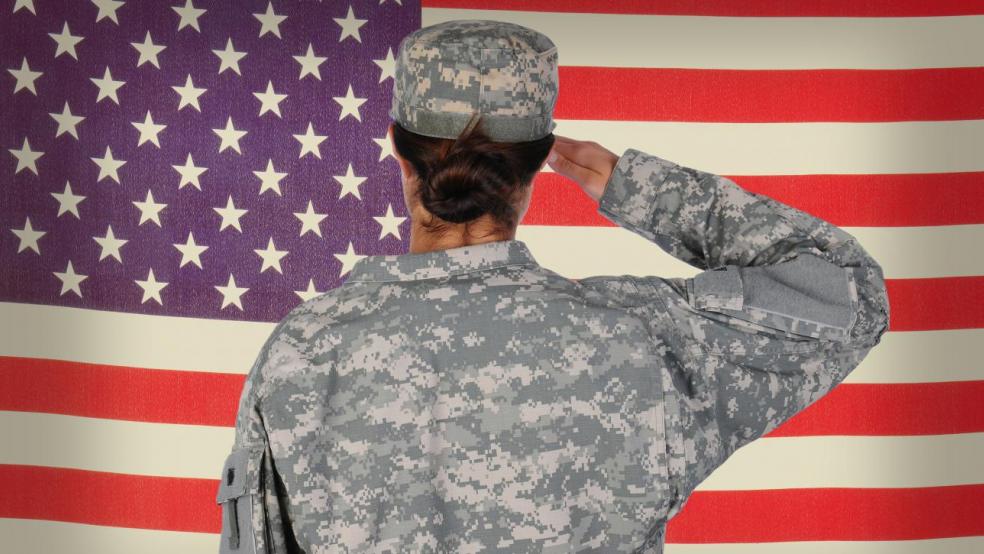A remarkable 44 percent of the nearly 700,000 U.S. military personnel who served in the 1990-1991 Persian Gulf War suffer from chronic symptom that include fatigue, headaches, joint pain, memory loss, neurological disorders, skin problems and respiratory disease.
Yet according to a new Government Accountability Office report, these veterans are finding it considerably more difficult than others to process their claims for benefits and treatment at Department of Veterans Affairs health centers.
Related: How the Military Discards Injured Troops and Denies Them Veterans Benefits
On average, Gulf War injury claims involve twice as many medical issues as other disability claims, and they take four months longer to complete than other more routine claims. Between fiscal years 2010 and 2015 – the most recent data available -- approval rates for GWI claims were about three times lower than for all other claimed disabilities, according to the GAO.
The reasons for the huge disparity in approval rates and the granting of disability insurance are varied, and frequently stem from the lack of medical records or corroborative evidence. But perhaps the biggest problem is the sheer ignorance of doctors and other medical staff in diagnosing and treating illnesses whose exact causes are often difficult to discern.
“VA's ability to accurately process GWI claims is hampered by inadequate training, and its decision letters for denied claims do not communicate key information to veterans,” according to the report.
VA medical examiners responsible for assessing a veteran’s disability and making a judgment on the merits of the application often are stumped by the range of symptoms that could qualify as Gulf War injuries. Moreover, only 10 percent of examiners have taken special training in order to better diagnose and treat the illnesses.
Related: Another VA Failure: The Veterans’ Choice Program Is Running Out of Money
Melissa Emrey-Arras, director of the GAO’s Education Workforce and Income Security Team, said in an interview with GAO’s Watchdog Report that “one of the main challenges with many of the symptoms related to Gulf War illness is that people just don’t really know what the cause of those symptoms or illnesses is.”
The Persian Gulf War waged by the U.S. and its Middle Eastern allies was triggered by the Iraqi Army’s invasion and occupation of Kuwait in 1990. The preponderance of the coalition’s military forces were from the United States, Saudi Arabia, Great Britain and Egypt, and their troops faced perilous desert conflict and a host of hazardous chemicals, pollutants and even nuclear radiation.
“Many people who served were exposed to things like pesticides, smoke from oil well fires, and even depleted uranium,” Emrey-Arras said. “So there’s this whole range of exposures that they experienced. And it’s really unclear sort of what is exactly causing their particular illnesses.”
Between fiscal 1994 and 2015, the VA funded more than $160 million of medical research related to Gulf War Illness, with $12.3 million in funding for fiscal year 2016. The offices of Research and Development and Post-Development Health both conduct Gulf War illness research.
Related: 3 Government Programs That Are Dangerously in the Red
The VA completed processing about 11,400 Gulf War illness claims in fiscal year 2015, which was more than double the 4,800 claims processed in fiscal year 2010, according to the GAO. Once the VA makes a determination, regulations require that officials provide a clear explanation to veterans regarding the decision. However, GAO found that “decision letters for GWI claims do not always include key information on why the claim was denied.”
According to the GAO analysis, the approval rate for Gulf War illness medical issues between 2010 and 2015 was 17 percent – or about 18,000 of 102,000 issues rated. That was about three times lower than all other medical issues at 57 percent – or about 14 million of 24.7 million issues rated.
“This approval rate was consistently lower than that of the non-Gulf War Illness medical issues in each year we reviewed, which officials attributed, in part, to the complexity of processing Gulf War Illness-related medical issues,” stated the GAO.





